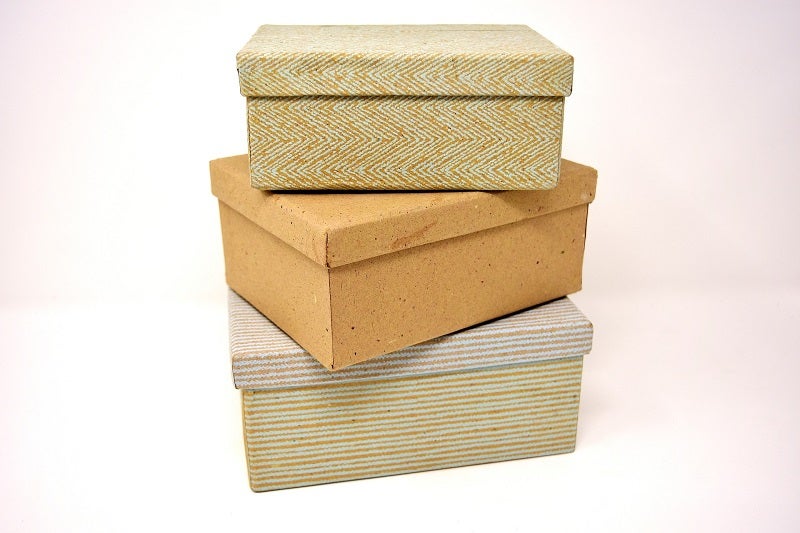
Corn Starch Packaging Material Solutions
Figures about plastic waste paint a terrifying picture of the world’s oceans in the years to come. Companies across industries aim to provide alternatives that offer the same flexibility, durability and cost-effectiveness while enhancing sustainability and depleting their environmental impact.
From sustainably sourced paperboard to bioplastics and plant-based alternatives, here are eight sustainable and unique plastic alternatives being explored in the packaging sphere.
Paperboard
A rise in consumer demand for on-the-go food from convenience stores has driven demand for smaller package sizes. Paperboard is able to fit the bill for a flexible, sturdy packaging material, which provides similar benefits to plastic while providing enhanced recyclability and sustainability benefits.
Paperboard packaging is derived from trees and can be easily recycled. For example, paperboard producer Mesta Boards’ stock is comprehensively sourced from sustainably managed forests in Northern Europe. According to the Paperboard Packaging Council, virtually all paperboard used in the US is taken from tree farms, where trees are planted, harvested and replanted specifically for paperboard packaging.
Bagasse
A by-product of sugar production, bagasse has served as a verifiable alternative to PET plastic containers as it requires significantly less energy and water to produce. After juice has been extracted from sugarcane stalks, the remaining pulp can be made into a dry paper-like substance. This can be moulded using heat and pressure into different shapes and used in foodservice packaging.
Bagasse can withstand food temperatures up to 200 degrees and degrades in around three months, making it an eco-friendly alternative to Styrofoam. It also has no impact on the taste or aroma of food.
Corn starch
Corn starch presents a number of eco-friendly benefits compared to regular plastic. It’s made from renewable sources and doesn’t feature the toxic chemicals associated with conventional plastic, such as polyvinyl chloride.
When disposed of correctly, packaging material made using corn-starch breaks down into carbon dioxide and water within several months. However, corn starch does come with some caveats – namely, it’s relatively slow degradation time compared to other alternatives and the moral issue of using foodstuffs for packaging.
Corn is one of the world’s most important food crops, with billions of tonnes produced worldwide, but online petitions such as ‘Corn for Food, Not Fuel’ highlight concerns about its use in alternative applications.
Metal
Metal packaging is experiencing continued growth, particularly across its most commonly used variants steel and aluminium, due to its preservative benefits for food and beverages. However, metals are recycled at a much higher rate than plastic and flexible packaging alternatives. It is also infinitely recyclable, meaning it can be reproduced endlessly without losing its properties.
The canned water trend is an example of companies shifting towards using metal (in particular aluminium) to reduce their environmental impact. Increased consumer demand for on-the-go packaging is fuelling subsequent demand for metal as an easy-to-use, easy-to-recycle option.
Glass
A leading packaging material for spirits, wines and beer, glass has steadily been creeping into more packaging applications for food and dairy products.
Like metal, glass can be recycled without a loss in quality, and its lack of permeability and chemically sound constitution means that food and drink products always maintain their flavour. According to the Glass Packaging Institute, an estimated 80% of recovered glass containers are made into new glass bottles, and legislation such as container deposit measures are expected to increase this even further.
A survey carried out by glass packaging organisation Friends of Glass last year found that 73% of Europeans rate glass as the most ocean-friendly drinks packaging, while 78% rank it among their top packaging choices when purchasing food and drink.
Seaweed packaging
A number of companies have landed on seaweed as a sustainable plastic packaging alternative, in part due to its sheer abundance and the ease of its cultivation.
Created by UK-based sustainable Oohoo is essentially an edible water bottle, consisting of a flexible membrane made from a seaweed extract. Offering a completely natural alternative to plastic bottles, cups and sachets, a spherical Oohoo is able to degrade in six weeks in a natural environment.
Indonesian company Evoware has been using seaweed as a stock resource for bioplastic packaging in a bid to overcome the country’s plastic pollution problems. Recently, Loliware launched a seaweed straw as a potential replacement for bars and restaurants where plastic straws have been banned.
Mushrooms
For several years, sustainable packaging start-up Ecovative has been fronting its own plant-based innovation: packaging made from mushrooms.
Unveiled in 2010, the company’s packaging is formed via a combination of non-food agricultural waste and mycelium – the mushroom’s vegetative root structure – which acts like natural glue binding the waste together.
According to the company, Ecocradle can be grown in a controlled environment within a week and degrades in the same short amount of time, despite being as insulating and flame-resistant as polystyrene. Last year, Swedish retail giant Ikea began using the mushroom-based alternative in lieu of Styrofoam packaging.
Currently, Ecovative is looking into transferring its home-grown fungi knowledge into other branches, including lab-grown meat and clothing.
Beeswax
Beeswax has been used as a preservative across numerous applications throughout history. Start-ups have been discovering ways to use the material as a plastic alternative.
Beeswax can be combined with essential oils and resin before being infused with organic cotton to create a flexible, reusable wrap with antimicrobial properties to help guard cold foods against spoilage.
US-based Bee’s Wrap coats organic muslin cloth in beeswax, jojoba oil and tree resin to create malleable, water-resistant and airtight wraps to keep food fresh. It’s another example of a plastic alternative that offers the same functional benefits in a biodegradable package.



